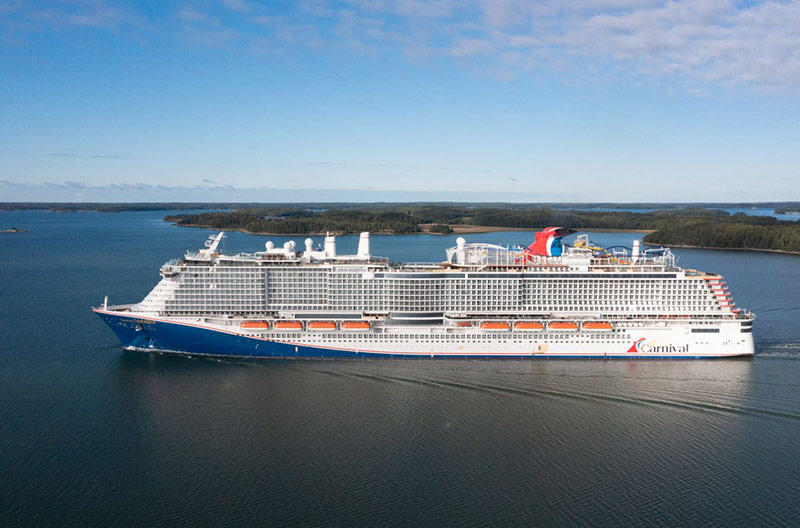Meyer Turku has always been in the forefront of new technologies, Tim Meyer, CEO, said to Cruise Industry News, noting that the yard built the first LNG-fueled passenger vessel, the Viking Grace, and that its sister yard in Papenburg delivered the first LNG-fueled cruise ship.
“It is important to understand that every time we build a prototype, we set very ambitious targets for GHG emissions and fuel consumption, so that the new ship becomes more efficient. That becomes part of our building contract with most customers and, of course, by reducing the fuel consumption, we also lower our customers’ operating costs.
“Over the years, we have been introducing new technologies in our newbuilds, such as, for example, podded propulsion; air lubrication to reduce the hull’s resistance in the water; advanced wastewater treatment, ballast water treatment, and more, which eventually have become building standards for the cruise industry.

“Now, we are focusing on HVAC, which is a large energy consumer,” Meyer continued. “It is not necessary to cool down all the public rooms all the time, when there are no people present, for example, or staterooms, when people leave.
“There is also the ventilation and exhaust from the galleys that used to run around the clock. We are now optimizing this, so it is only running when there is cooking going on.”
In addition, Meyer Turku is looking to develop a carbon neutral cruise ship concept by 2025, working with suppliers, universities and research organizations, as well as the state of Finland.
“This is a very important effort and will be key to our success going forward,” Meyer said. “On one hand you have the ship itself, on the other hand you have the shipyard, and then we have our network and supply chain that can be optimized.
“A cruise ship is like small city; you have everything from water production to wastewater treatment and so on. The goal is to have all these systems working together as efficiently as possible, and with AI (artificial intelligence) we will be able to do just that.
“Another pillar is our people, so we are also focused on creating new competencies within the yard, looking at how we are working and developing new ideas for methods and procedures.”
As a shipbuilder, Meyer said the company can literally build anything. However, the key is that it must make sense.
“When you have a ship such as the Viking Grace running between Stockholm and Turku, then it makes sense to operate on LNG, as long as you have a fixed route. But if you have a cruise ship sailing all over the world that may not work if LNG cannot be bunkered. So, you have to adapt the product.
“The big question is what fuels will be available and where they will be available,” Meyer continued.
“Another factor that plays in is the energy density of marine fuels. Diesel oil has the most energy per liter; methanol has only half as much, LNG a little less than methanol; liquefied ammonia, liquid organic hydrogen carriers and liquefied hydrogen even less.”
Thus, future fuels could impact the design and general arrangement of future ships, tank space and bunkering frequency.
“What does zero emissions mean,” Meyer asked rhetorically. “Does it mean no exhaust only or does it also mean no sound and no vibrations? What is important for us is to look at different aspects, not only the cruise ships itself but also the supply chain. Germany, for example, is studying how to make the steel production more sustainable. As a shipyard, we cannot do all of this, but work as partners with our suppliers.
“We have to look at the whole picture, and if you compare to what people do on land, let’s say they drive their car, heat their homes, prepare food, go to the theater and so forth. If you add all that up on a per capita basis, I think cruise ships will come out quite well.”
Contrary to land-based hotels and resorts, there is no waste of energy on a cruise ship, according to Meyer, who said that is a challenge the shipbuilder has been tackling for years and continue to look for new solutions.
Excerpt from Cruise Industry News Quarterly Magazine: Fall 2022




